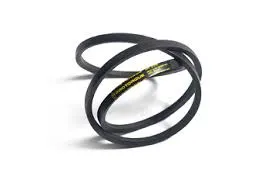- Arabic
- French
- Russian
- Spanish
- Portuguese
- Turkish
- Armenian
- English
- Albanian
- Amharic
- Azerbaijani
- Basque
- Belarusian
- Bengali
- Bosnian
- Bulgarian
- Catalan
- Cebuano
- Corsican
- Croatian
- Czech
- Danish
- Dutch
- Afrikaans
- Esperanto
- Estonian
- Finnish
- Frisian
- Galician
- Georgian
- German
- Greek
- Gujarati
- Haitian Creole
- hausa
- hawaiian
- Hebrew
- Hindi
- Miao
- Hungarian
- Icelandic
- igbo
- Indonesian
- irish
- Italian
- Japanese
- Javanese
- Kannada
- kazakh
- Khmer
- Rwandese
- Korean
- Kurdish
- Kyrgyz
- Lao
- Latin
- Latvian
- Lithuanian
- Luxembourgish
- Macedonian
- Malgashi
- Malay
- Malayalam
- Maltese
- Maori
- Marathi
- Mongolian
- Myanmar
- Nepali
- Norwegian
- Norwegian
- Occitan
- Pashto
- Persian
- Polish
- Punjabi
- Romanian
- Samoan
- Scottish Gaelic
- Serbian
- Sesotho
- Shona
- Sindhi
- Sinhala
- Slovak
- Slovenian
- Somali
- Sundanese
- Swahili
- Swedish
- Tagalog
- Tajik
- Tamil
- Tatar
- Telugu
- Thai
- Turkmen
- Ukrainian
- Urdu
- Uighur
- Uzbek
- Vietnamese
- Welsh
- Bantu
- Yiddish
- Yoruba
- Zulu
Δεκ . 04, 2024 09:43 Back to list
Understanding the Basics of V-Belt Drives and Their Applications in Machinery
V-Belt Transmission An Overview of Its Applications and Benefits
V-belt transmissions have been a cornerstone in the field of mechanical engineering and industrial applications for decades. Known for their simplicity, efficiency, and reliability, V-belts play a crucial role in power transmission systems, particularly in various machinery and automotive vehicles. This article provides an in-depth look at V-belt transmissions, their working principles, applications, and the benefits they offer.
Understanding V-Belt Transmissions
A V-belt is a looped strip of rubber, fabric, or other materials, shaped in a trapezoidal cross-section. This unique shape allows the belt to fit into the grooves of pulleys, leading to an increased grip and efficient power transfer. V-belt transmissions consist of at least two pulleys connected by one or more V-belts. When the driving pulley rotates, it turns the belt, which subsequently drives the follower pulley, transferring mechanical energy.
The effective grip achieved due to the V shape enables V-belts to handle high loads while minimizing slippage. This is particularly useful in applications requiring high torque capacities. V-belts can be categorized into three main types classical belts, narrow belts, and synchronous belts, each tailored to specific operational requirements.
Applications of V-Belt Transmissions
V-belt transmissions are ubiquitous in industries and practical applications
. Here are some notable examples1. Automotive In the automotive sector, V-belts are used in engine systems to drive components like alternators, water pumps, and air conditioning units. Their ability to absorb shock and vibrations makes them ideal for the dynamic environment of an engine.
2. Industrial Machinery In factories, V-belt drives are commonly found in conveyors, compressors, and power tools. They efficiently transfer power between electric motors and various processing equipment, enhancing productivity and operational efficiency.
3. Agriculture V-belts are used in farming equipment, including tractors and harvesters, where they operate various attachments and implements. Their resilience and ability to work in rough environments make them suitable for agricultural applications.
v belt transmission

4. HVAC Systems Heating, ventilation, and air conditioning systems utilize V-belt drives to operate fans and compressors. Here, V-belts effectively manage power transfer while maintaining energy efficiency.
Benefits of V-Belt Transmissions
V-belt transmissions come with a host of advantages that make them an appealing choice for many applications
1. Efficiency V-belts provide high efficiency in terms of power transmission, often exceeding 90%. This efficiency translates to lower energy consumption and reduced operational costs, making them a preferred choice for many industrial applications.
2. Versatility The adaptability of V-belts allows them to be used across diverse applications ranging from small appliances to large industrial machines. They can be engineered to meet specific load requirements, ensuring a perfect fit for differing needs.
3. Cost-Effectiveness Compared to other power transmission systems such as chain drives or gear drives, V-belt systems are typically less expensive to purchase and maintain. The simplicity of installation and lower maintenance requirements contribute to overall cost savings.
4. Noise Reduction V-belt drives operate quieter than many other mechanical systems, making them suitable for applications in which noise reduction is a priority, such as in public spaces.
5. Shock Absorption Due to the elasticity of the materials used in V-belt construction, these belts can absorb shocks and vibrations effectively, promoting longevity and reducing wear on both the belts and the machines they drive.
Conclusion
In summary, V-belt transmissions have proven to be an incredibly effective method of power transmission across numerous applications. Their efficiency, versatility, cost-effectiveness, and ability to reduce noise and absorb shocks contribute to their lasting popularity in various industries. As technology continues to advance, V-belts remain a vital component in modern mechanical systems, ensuring their relevance and application for years to come. Whether in automotive engineering, industrial machinery, or agricultural equipment, the role of V-belt transmissions is indispensable, driving innovation and efficiency in power transfer mechanisms.
-
Korean Auto Parts Timing Belt 24312-37500 For Hyundai/Kia
NewsMar.07,2025
-
7PK2300 90916-T2024 RIBBED BELT POLY V BELT PK BELT
NewsMar.07,2025
-
Chinese Auto Belt Factory 310-2M-22 For BMW/Mercedes-Benz
NewsMar.07,2025
-
Chinese Auto Belt Factory 310-2M-22 For BMW/Mercedes-Benz
NewsMar.07,2025
-
90916-02660 PK Belt 6PK1680 For Toyota
NewsMar.07,2025
-
drive belt serpentine belt
NewsMar.07,2025

